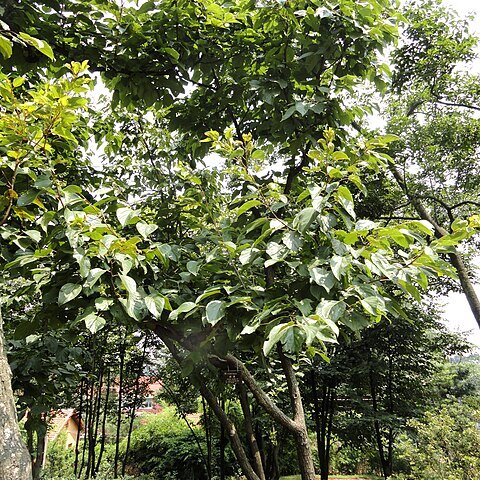Trees large, 10-25 m tall. Branchlets brown or black-purple, brownish pilose or glabrous, with conspicuous white lenticels. Petiole 2-5 cm, glabrous; leaf blade broadly ovate, elliptic-ovate, or cordate, 8-17 × 6-12 cm, thickly papery to papery, abaxially glabrous or pilose on veins or in vein axils, adaxially glabrous, base truncate or cordate, rarely subrounded or broadly cuneate, margin finely serrulate, in upper or nearly terminal leaves ± conspicuously dentate, rarely subentire, apex acuminate. Inflorescences brownish pilose. Flowers 5-6.5 mm in diam., in terminal or axillary, symmetrical, dichasial cymose panicles. Sepals 1.9-2.2 × 1.3-2 mm, glabrous. Petals clawed, elliptic-spatulate, 2-2.2 × 1.6-2 mm. Disk pubescent. Style 1.7-2.1 mm, ± deeply branched, glabrous or pilose. Fruit yellow-brown or brown at maturity, subglobose, 5-6.5 mm in diam., glabrous or pilose; fruiting peduncles and pedicels dilated and ± fleshy. Seeds dark brown or blackish purple, 3.2-4.5 mm in diam. Fl. May-Jul, fr. Aug-Oct.
More
A deciduous shrub or tree. It can be 10-25 m tall. The leaves are oval and heart shaped at the base. They are 8-17 cm long by 6-12 cm wide. They are papery. The flowers are at the ends of branches or in the axils of leaves. The fruit is massed in clusters on the ends of the stems. The fruit are yellow but become brown when ripe. They can be 6.5 mm across. The fruiting stalks becomes fattened and fleshy. The seeds are dark brown. There are 2 botanical varieties.


